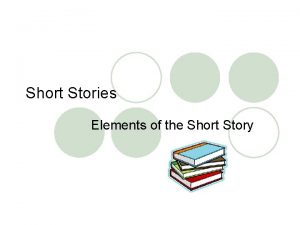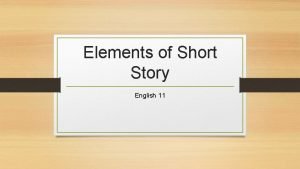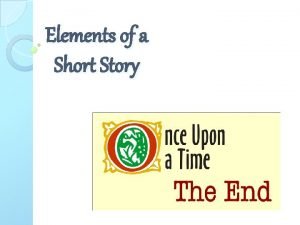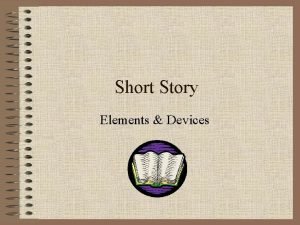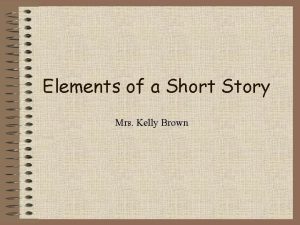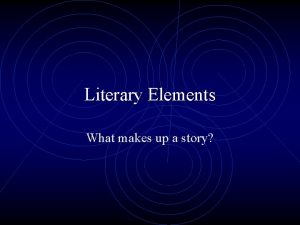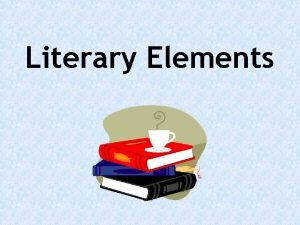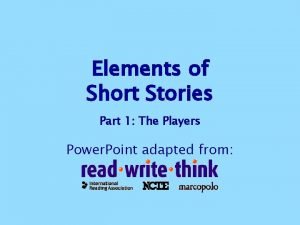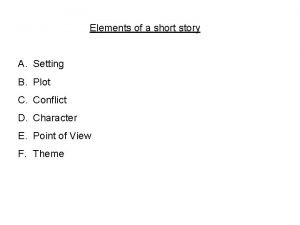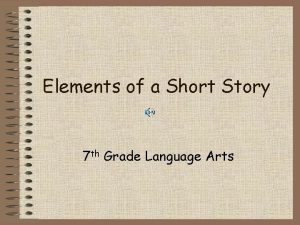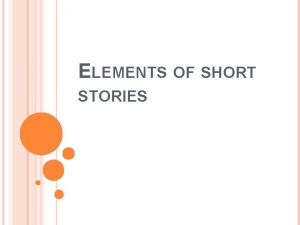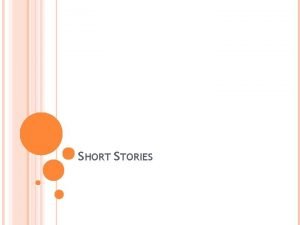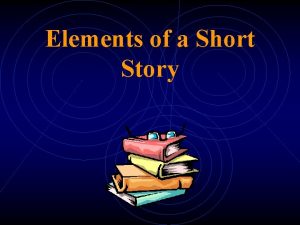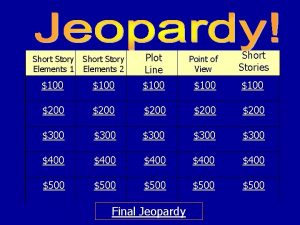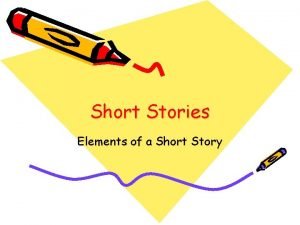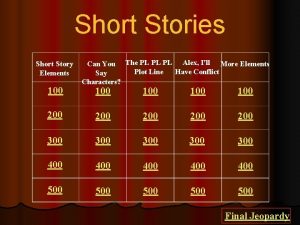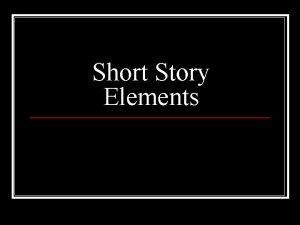SHORT STORIES ELEMENTS OF THE SHORT STORY Learning












- Slides: 12

SHORT STORIES

ELEMENTS OF THE SHORT STORY

Learning Targets I can create a cohesive story using character, setting, and plot 2. I can collaborate with a partner 3. I can demonstrate an understanding of the elements of a short story 4. I can create a full and complete story in 1800 -2000 words 1.

Setting • 5 W’s • What is the setting of your story? • How did the author establish the setting? • How is the setting important to the way the story is progressing? • If you changed the setting of the story, would it drastically change the progression of plot? Why? If it would, in what way?

Character Review • Character - representation of a person, place, or thing performing traditionally human activities or functions in a work of fiction • Characterization - The choices an author makes to reveal a character’s personality, such as appearance, actions, dialogue, and motivations. • Protagonist - The character the story revolves around. • Antagonist - A character or force that opposes the protagonist. • Character Foil- A character is portrayed as opposite of another character in a particular way in order to highlight the opposing traits. • Minor character - Often provides support and illuminates the protagonist. • Static character - A character that remains the same. • One-Dimensional character (flat)- A character who lacks depth and who never seems to learn or grow. (Protagonist-negative; other characters- often useful • Dynamic character - A character that changes in some important way.

Plot Review • Exposition- necessary background information • Rising action-the series of events that build up and create tension and suspense. • Climax-the turning point where a decision is made or change occurs. The reader should know the outcome of the conflict and understand all the events leading up to the climax. • Falling action- the series of events following the climax and leading to the resolution • Resolution-The last part of your story should resolve any questions left after the climactic events take place, ending the conflict presented in the story.

Conflict Review • The conflict is a struggle between two people or things in a short story. The main character is usually on one side of the central conflict. • On the other side, the main character may struggle against another important character, against the forces of nature, against society, or even against something inside himself or herself (feelings, emotions, illness).

Theme • The theme of a piece of fiction is its view about life and how people behave. • In fiction, theme is not presented directly. You extract it from the characters, action, and setting that make up the story. • The writer's task is to communicate on a common ground with the reader. Although the particulars of your experience may be different from the details of the story, the general underlying truths behind the story may be just the connection that both you and your reader are seeking. • Most novels actually have multiple themes that can be extracted.

Finding the Theme Keep the following guidelines in mind when you want to find and state theme of a work. • The theme is not the same thing as the subject • The subject is simply the topic. It can be stated in a single word, such as loyalty. • The theme makes some revelation about the subject and should be expressed in a sentence: “Loyalty to a leader is not always noble. ”

Task • You and a partner will write your own short story. • Few specific requirements: 1. 2. 3. 4. 5. 6. Use the ‘Nano’ cards as part of the story Length (1800 -2000 words), Clear plot components (exposition, climax, etc. ) Protagonist and antagonist/foil Conflict Use dialogue. • Due by 10 pm on Friday, 3/6 (just one document per partner pair…use both last names as the submission title please).

Outline First You need to develop a proposal/outlines for your short story. Outlines must include: 1. Point of view of the story 2. Summary or basic plot of the story 3. Setting of the story including general time and place, and how the setting is important to the story 4. A description of at least 2 characters that would be involved 5. Summary of the conflict of the story

“EPICAC” by Kurt Vonnegut 1. 2. 3. 4. 5. Identify the setting Identify the types of characters Identify the elements of plot Identify theme. Identify the conflict.
 Long and short
Long and short Short story element
Short story element What is the theme of a story examples
What is the theme of a story examples Objectives in elements of a short story
Objectives in elements of a short story Elements of short story
Elements of short story Elements of short story example
Elements of short story example Introduction to short stories
Introduction to short stories Elements of a narrative story
Elements of a narrative story Elements of a short story video
Elements of a short story video Literary elements of fiction
Literary elements of fiction Elements of a short story powerpoint
Elements of a short story powerpoint Setting of a story
Setting of a story Elements of a short story grade 7
Elements of a short story grade 7

